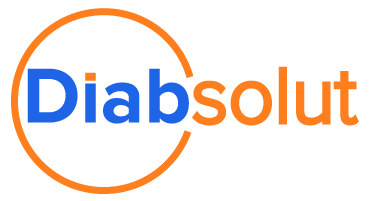A Dual Analysis of Salesforce and Customer Enablement
Author: Peter McMullan
 As touched on in our blog about data-driven needs and customer centricity, if one of your organization’s goals is to ensure you can better serve your customers, you need to have the right customer enablement strategy and tools.
As touched on in our blog about data-driven needs and customer centricity, if one of your organization’s goals is to ensure you can better serve your customers, you need to have the right customer enablement strategy and tools.
If you’re curious about how Salesforce ranks in the world of customer enablement solutions, we’ll be analyzing that topic from two equally important perspectives:
- Salesforce’s customer enablement strategy when it comes to serving their customers
- Along with tips for any business looking into software as a service (SaaS) solution
- What customer enablement tools Salesforce technology provides to assist with an organization’s customer engagement and support
How Salesforce Enables Its Customers
If you’re comparing SaaS or subscription-based products and the businesses that supply them, it’s important to look at the company’s ability to provide long-term ROI. If you choose to invest in their solution:
- Will value continue to be added over time and what is their strategy for product development?
- How will value be added?
- Does product development align with your organization’s goals and needs?
- How stable is the organization providing the solution?
- What do they look like from an innovation, revenue, and partner perspective?
When looking at Salesforce through this lens, customer enablement is a key factor in the organization’s ability to provide continuous ROI for Salesforce technology users.
- Their products’ value over time and development strategy:
- 3 major releases for each system annually
- A large amount of time and effort devoted to stakeholder engagement, to assist with industry-specific product development, releases, updates, and extras
- User feedback and real-life use cases have a direct impact on products
- Free user training and a responsive support community via Trailhead, to encourage solution ownership and bridge knowledge transfer gaps after implementation
Salesforce’s strategy for customer enablement is in line with the customer enablement tools they offer organizations via their products. Improve processes, collect and analyze the data your customers provide, make business decisions and further improvements based on that data, provide a better customer experience and appeal to new customers.
It also ties directly into Salesforce’s organizational stability:
- Financially, they’re doing well due to this strategy, which impacts solution longevity
- Their focus on creating useful innovations (mentioned above), and plays-well-with-others approach to partner and 3rd party technology not only speaks well in terms of stability but offers a large variety of ways for users to increase their overall solution ROI
Salesforce’s Customer Enablement Tools
While Salesforce systems are all about customer enablement tools and ensuring customers are supported through the way a business operates, how these tools work can vary based on the product, industry, configurations performed, overall solution components, etc. (e.g., Education Cloud vs. Salesforce Field Service).
However, some of the basic customer enablement tools the Salesforce platform offers include:
- Centralized data and customer information for simplified account and/or case management
- Salesforce recently announced the general availability of Salesforce Genie at Dreamforce
- This update is their next-generation CDP, which will further improve app and technology integration with the Salesforce platform
- Improved integration means faster updates of customer information from across the entire solution
- Salesforce recently announced the general availability of Salesforce Genie at Dreamforce
- The ability to easily complete complex processes via automation, templates, data triggers, and integration; as well as more quickly address or escalate issues, cases, and tasks
- Customer self-help and customer portal options expand these capabilities
- UI designed for user-friendliness, ease of use, and adherence to best practices
- Reporting abilities within the system, which allow for better strategy development
- Each data point is analyzed, and the meaning of that data is presented in a way that allows an organization to adjust operations, services, support, engagement, etc., to achieve continuous improvement
Additional Customer Enablement Resources
If your organization wants a more customer-centric solution that provides the right customer enablement tools for your business, we’re always happy to provide information or assistance. Contact us for help, or take a look at some of our other thought leadership for more information:
Search
Trending Topics
- E18: Click FSE Migration to Salesforce Field Service – Java With Sugar Podcast
- E17: The Process of Migrating from a Product That Is Retiring – Java With Sugar Podcast
- E16: Decoding FSE’s End-of-Life and Common Migration Practices – Java With Sugar Podcast
- A Dual Approach to Efficiency in Field Service Management: Asset-Centric vs. Customer-Centric Models
- E15: Trends and Limitations in AI – Java With Sugar Podcast
- Enhancing Field Service Operations with SFS-X
- E14: Our Point of View and Insights on AI – Java With Sugar Podcast
- E13: What Is Artificial Intelligence and Why Is It Beneficial for You? – Java With Sugar Podcast
- AI Ethics: What Is It and Why Does It Matter?
- 3 Tips to Improve Your Strategy and ROI When Selecting SaaS Solutions
